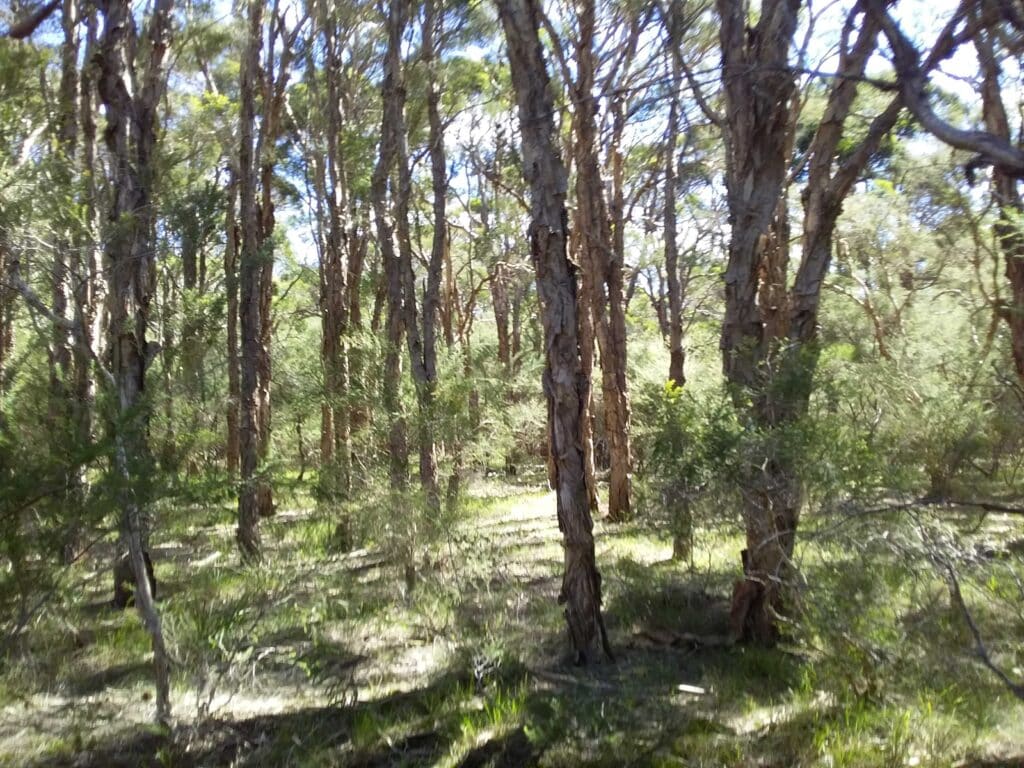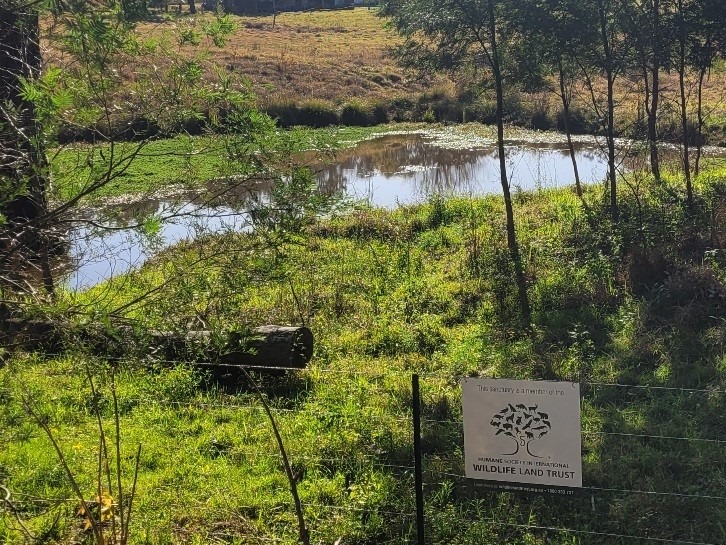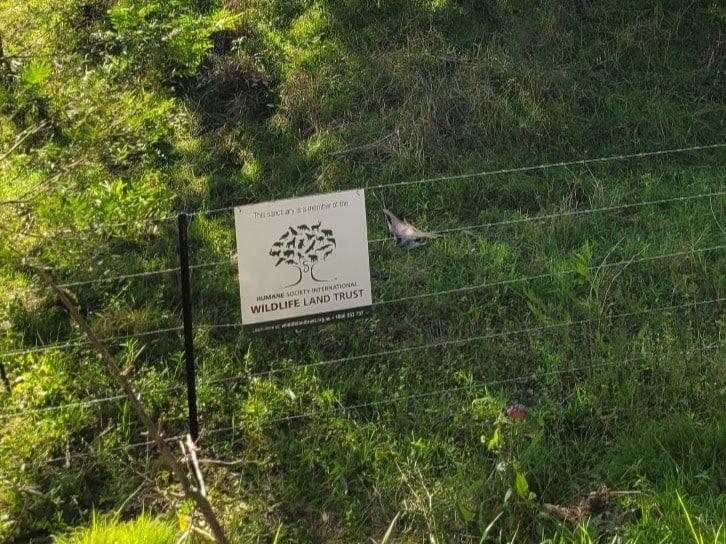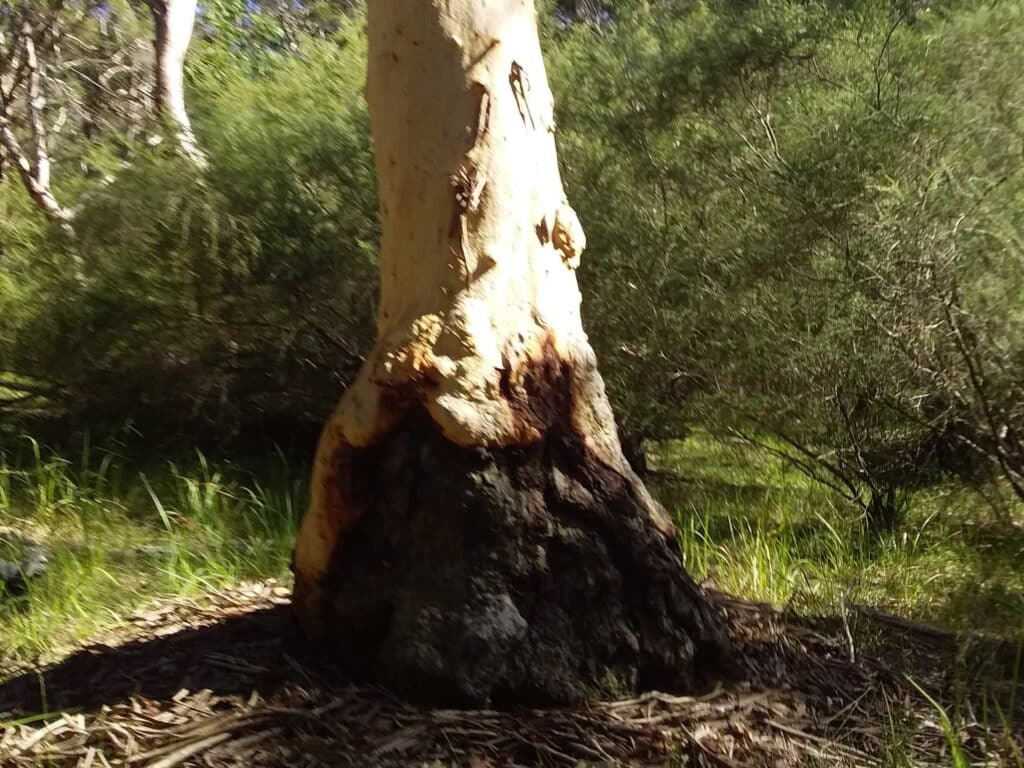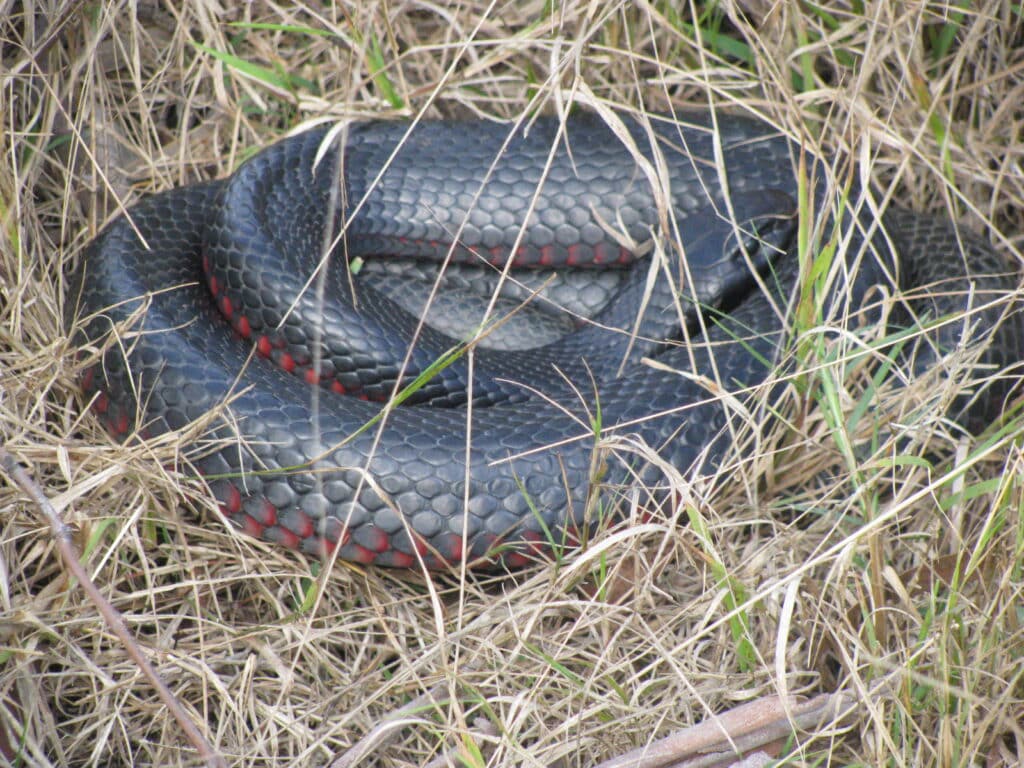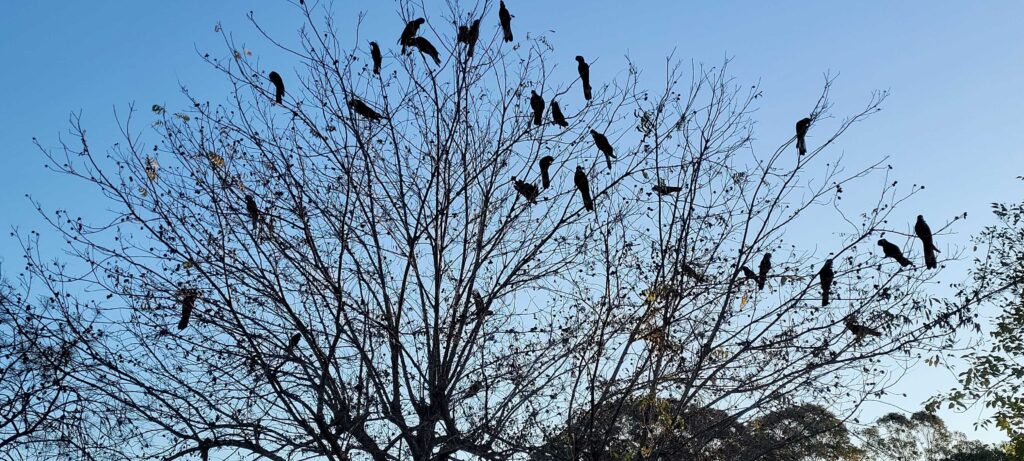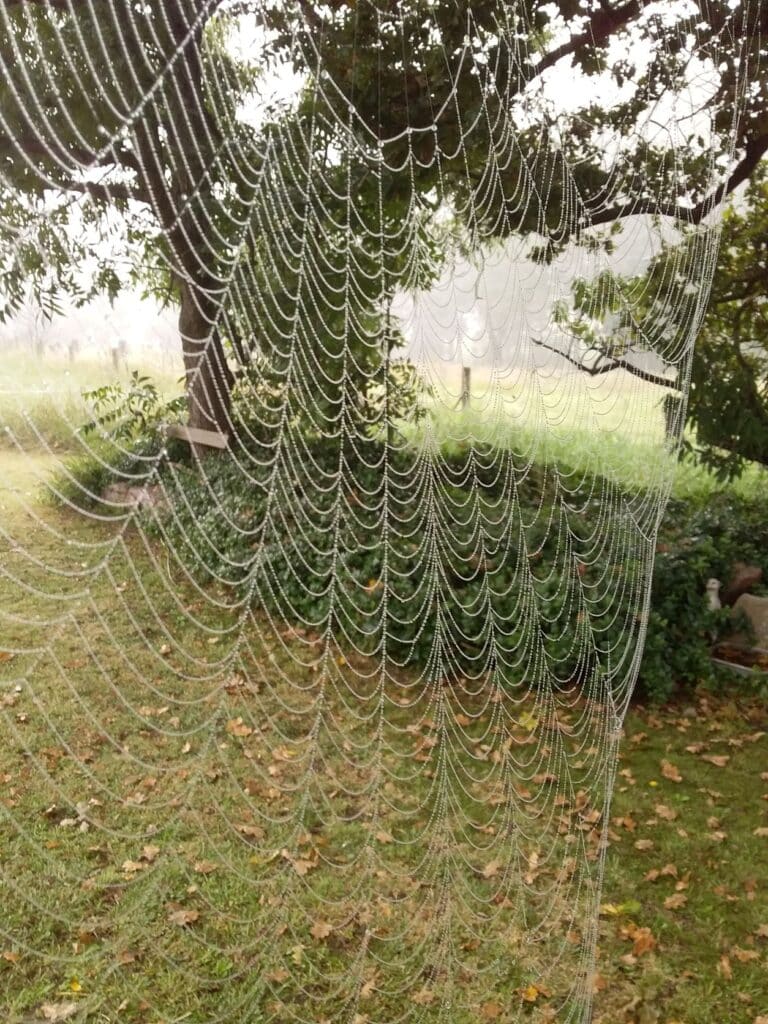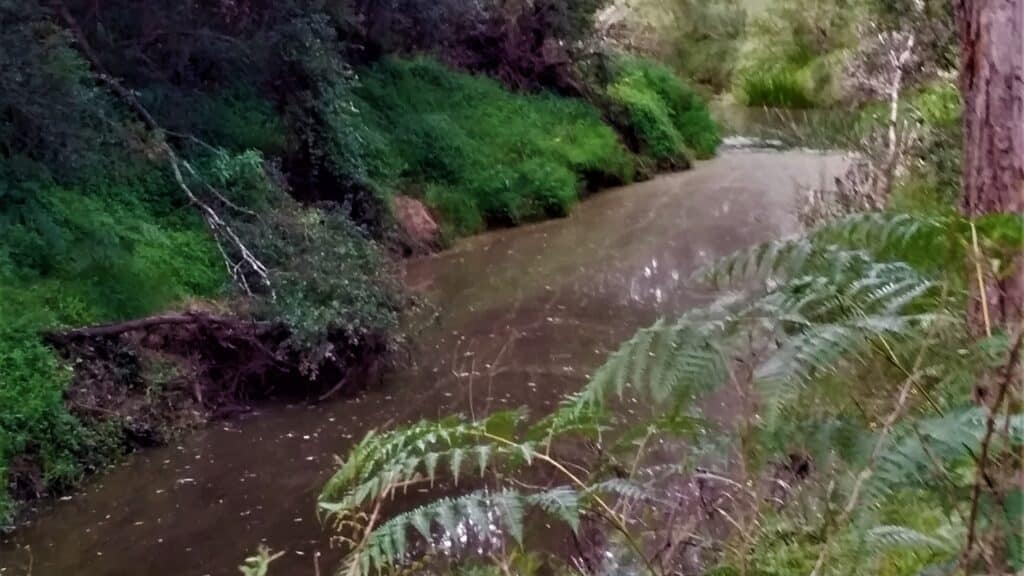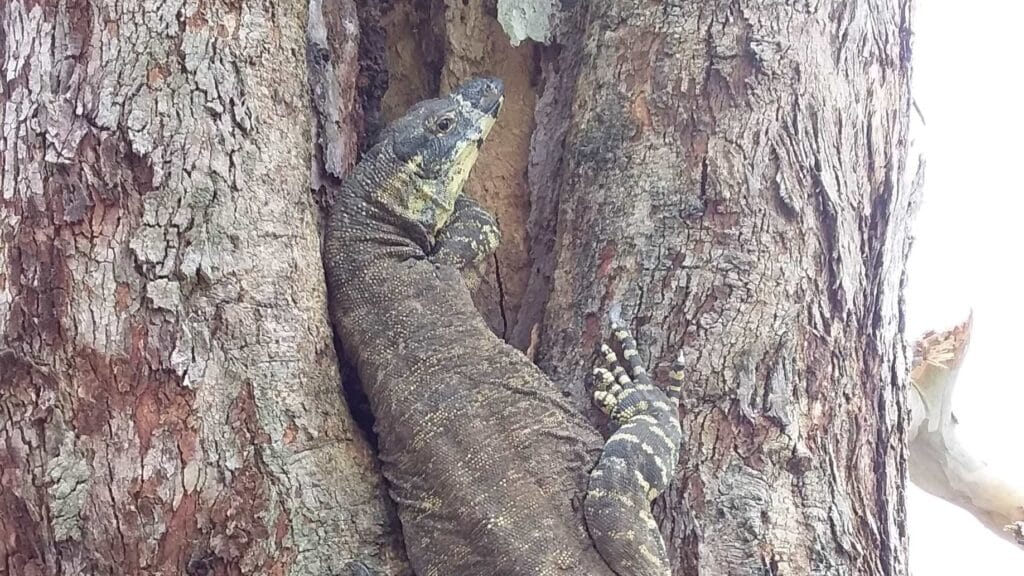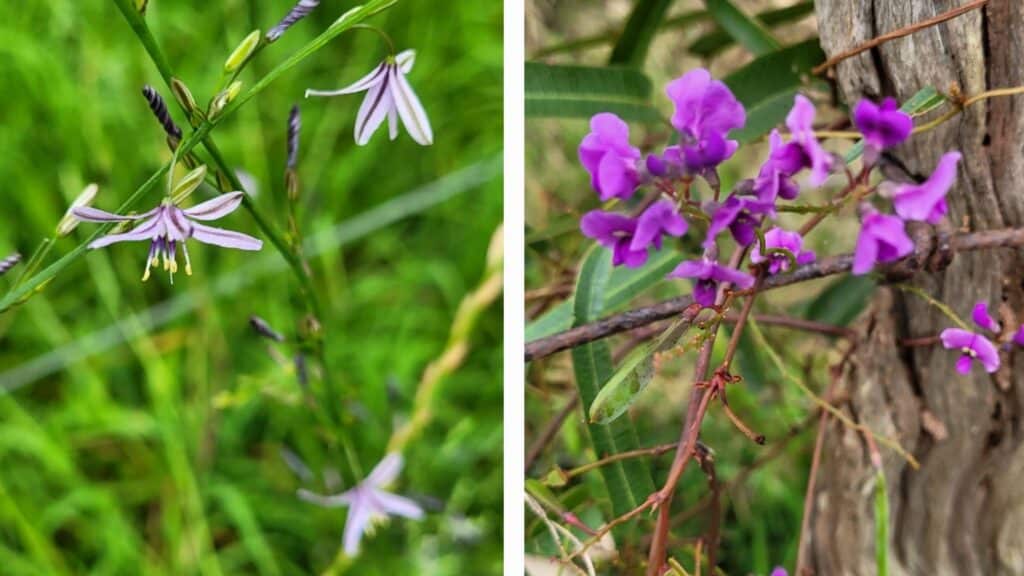Judith Ann & John Warwick Sanders are the owners of Tin Gully, a wildlife sanctuary situated in Wilberforce, New South Wales. The property is currently used for recreation, features two dams and has one cow grazing and the owners intend to preserve the sanctuary’s habitat into the future. The property’s historical uses include hosting an orchard, poultry farm and beef cattle production. Since owning the property Judith and John have worked to repair erosion and (under Local Land Service’s supervision) undergo a rabbit control program, in conjunction with a neighbour, not tilling the soil or burning. They have been encouraging native vegetation whilst recording fauna and flora and submitting the data to Australian Birdlife, iNaturalist and FrogID. Judith and John have also been participants in the ‘Bats in Backyards’ citizen science project, which identified insectivorous bats feeding at night around their property. This project is a collaboration between NSW Government Saving our Species program, Western Sydney University, and the NSW Department of Primary Industries.
The property spans 16.5 hectares in size with 50% of the property covered by remnant transition Cumberland Plain ecosystems including Cumberland Shale Plains Woodland and Cumberland Shale Sandstone Ironbark Forest. There are two watercourses on the property with Currency Creek forming the Northern boundary and Tin Gully Creek flowing through the eastern section. The rest of the property is pasture with a mixture of native and introduced grasses including kikuyu and couch. A range of wildlife is found at Tin Gully, including kangaroos (Macropus giganteus), euros (Osphranter robustus), grey-headed flying foxes (Pteropus poliocephalus), echidnas (Tachyglossus aculeatus), ringtail possums (Pseudocheirus peregrinus), 12 species of insectivorous bats: white-striped free-tailed bat (Austronomus australis), Gould’s wattled bat (Chalinolobus gouldii), chocolate wattled bat (Chalinolobus morio), eastern falstriello (Falsistrellus tasmaniensis), eastern coastal free tailed bat (Mormopterus norfolkensis), large bent-winged bat (Miniopterus schreibersii) ride’s free-tailed bat (Ozimops ridei), long-eared bat species ( Nyctophilus sp.), eastern horseshoe bat (Rhinolophus megaphyllus), greater broad-nosed bat ( Scoteanax rueppellii), eastern broad-nosed bat (Scotorepens orion), little forest bat (Vespadelus vulturnus), over 100 species of birds, reptiles: ranging in size from tiny skinks to great old goannas, native bees, eight species of frogs: common eastern froglet (Crinia signifera), Peron’s tree frog (Litoria peronii), whistling tree frog (Litoria verreauxii), eastern dwarf tree frog (Litoria fallax), striped marsh frog (Limnodynastes peronii), green tree frog (Litoria caerulea), broad-palmed rocket frog (Litoria latopalmata), screaming tree frog (Litoria quiritatus) and a male koala (Phascolarctos cinereus) who has been heard calling as he moved through the trees during two consecutive mating seasons.



